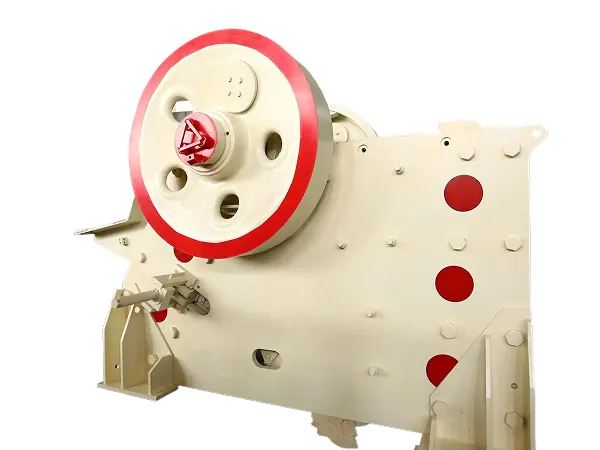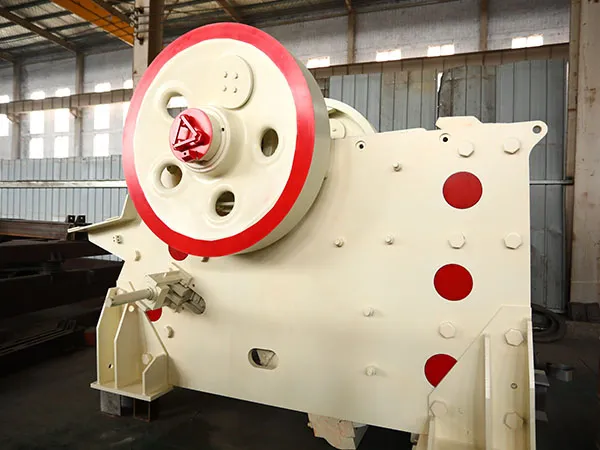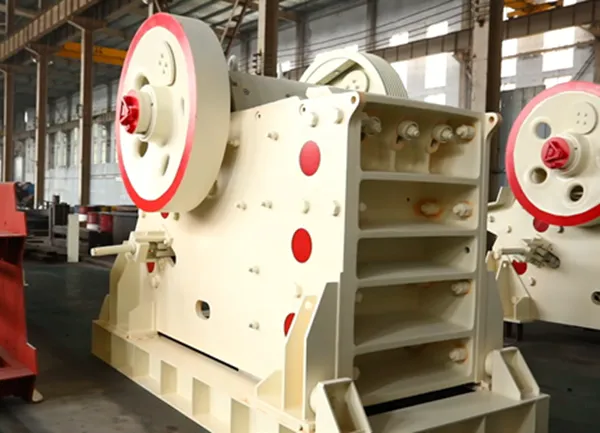Reducing the cost of jaw crusher wear parts is crucial for optimizing operational expenses in crushing plants. Here's a comprehensive approach combining best practices in maintenance, operation, and material selection.

Regular Inspections: Implement a routine schedule for inspecting wear parts (jaw plates, side liners, toggle plates, etc.) for signs of wear, cracks, and damage. Early detection prevents minor issues from escalating into costly repairs or premature replacements.
Visual Inspections: Look for irregularities or excessive wear.
Wear Measurement: Use tools like calipers to track wear rates and predict replacement needs.
Monitor Wear Patterns: Uneven wear can indicate issues with feeding or crusher settings.
Proper Lubrication: Follow the manufacturer's recommendations for lubrication intervals and the type of lubricants. Adequate lubrication reduces friction and wear on moving parts like bearings and the eccentric shaft, extending their lifespan.
Correct Installation: Ensure wear parts are installed precisely according to manufacturer specifications. Misalignment can lead to uneven wear and premature failure. Adhere to recommended torque settings for fasteners.
Optimize Crusher Settings:
Adjust Jaw Settings (CSS): Regularly adjust the closed-side setting (CSS) to maintain optimal performance and reduce wear. Fine-tuning these parameters balances product size, throughput, and power draw.
Control Operating Speed: The operating speed affects the reduction ratio and wear.
Choke Feeding: Keep the crushing chamber at least 80% full to promote inter-particle crushing, which reduces direct wear on jaw dies and improves product shape.
Material Handling and Feed Optimization:
Feed Material Analysis: Understand the characteristics of the material (hardness, abrasiveness, moisture content) to select appropriate wear parts and optimize performance.
Avoid Contaminants: Ensure the feed material is free of metal or other debris that can cause excessive wear or damage.
Pre-Screening/Scalping: Remove fines (material smaller than the CSS) and oversized material from the feed before it enters the crusher. Fines can cause unnecessary wear and reduce efficiency, while oversized material can clog the crusher and lead to excessive strain. Vibrating grizzly feeders or scalping screens are effective for this.
Consistent Feed: Maintain a consistent feed size and flow rate into the crusher. Fluctuations can increase power draw and reduce productivity.
Avoid Sticky or Lightweight Materials: Jaw crushers are not ideal for these materials as they can build up on jaw plates or not draw down effectively, reducing efficiency and increasing wear.
Timely Replacement & Rotation:
Scheduled Replacements: Implement a proactive replacement strategy based on wear measurements and historical data. Replacing parts before they fail can prevent damage to other components and costly downtime.
Rotate Jaw Dies: Many jaw plates are designed to be rotatable (e.g., flipping them top to bottom or swapping movable and stationary dies). This allows for more even wear across the entire surface, effectively doubling their lifespan.
Cost-Benefit Analysis: Determine the optimal time for rotation or replacement by considering the balance between wear part cost and potential production loss due to worn parts.

Material Selection: Invest in high-quality, wear-resistant liners and jaw plates. Materials like high-manganese steel (e.g., ZGMn13), chrome-molybdenum alloy, or ceramic-reinforced liners offer significantly longer service life than standard components.
Focus on the "Recipe": The combination of materials in the wear part is critical.
Work-Hardening Properties: Manganese steel is favored for its ability to work-harden under impact, increasing its wear resistance over time.
Jaw Die Profile: Choose the correct jaw die profile for the specific application and material being crushed. Different profiles (e.g., quarry thick, flat tooth, toothed) are designed for varying material crushability, abrasiveness, and desired product shape.
OEM vs. Aftermarket: While aftermarket parts are available, Original Equipment Manufacturer (OEM) parts are generally recommended as they are designed for specific compatibility and optimized performance. However, some reputable aftermarket manufacturers can provide high-quality alternatives that offer better wear life based on direct cooperation with crusher users.
Protection Plates: Consider using protection plates for the pitman and front casting, especially when crushing hard or tough materials, or when operating at minimum settings.
Fatboy Cheek Plates: Newer designs with advanced materials can offer significantly longer lifespans for cheek plates.

Planned Replacement Program: Develop a proactive replacement schedule based on operating hours, production volumes, and historical wear rates to avoid unplanned downtime and costly emergency replacements.
Condition Monitoring: Utilize online condition monitoring equipment (vibration, temperature, lubrication data) for continuous assessment of crusher components, allowing for prioritized maintenance work.
Preventive Maintenance: Establish scheduled servicing programs based on operating hours or tonnage to reduce unexpected failures.
Maintenance Optimization: Leverage digital technologies and data analysis to improve maintenance efficiency and reduce downtime duration.
Component Standardization: Where possible, use interchangeable components across similar crushers to minimize spare parts inventory costs and streamline repairs.
Operator Training: Educate operators on best practices for feeding materials, adjusting settings, and conducting inspections to minimize wear and tear.
By implementing these strategies, you can significantly reduce jaw crusher wear parts costs, extend equipment lifespan, and improve overall operational efficiency.
How Jaw Crushers Boost Efficiency in Modern Stone Crushing Plants
2025-12-11 08:03Jaw Crusher Selection Guide: How to Precisely Select a Jaw Crusher for Different Working Conditions
2025-12-05 06:38Advanced Eco-Friendly Impact Crushers: Optimizing Industrial Efficiency and Sustainability
2025-11-24 02:27Impact Crusher vs Jaw Crusher: Key Differences, Applications & Efficiency Guide
2025-11-19 03:12Address: Luoyang Luoxin Industrial Park, Henan,China
E-mail: sales@yd-crusher.com
Phone: 86-139-3993-0123

Yude
Mechanical
Create the greatest value for customers
Provide the best quality products and services
86-139-3993-0123
sales@yd-crusher.com
Luoyang Luoxin Industrial Park, Henan,China